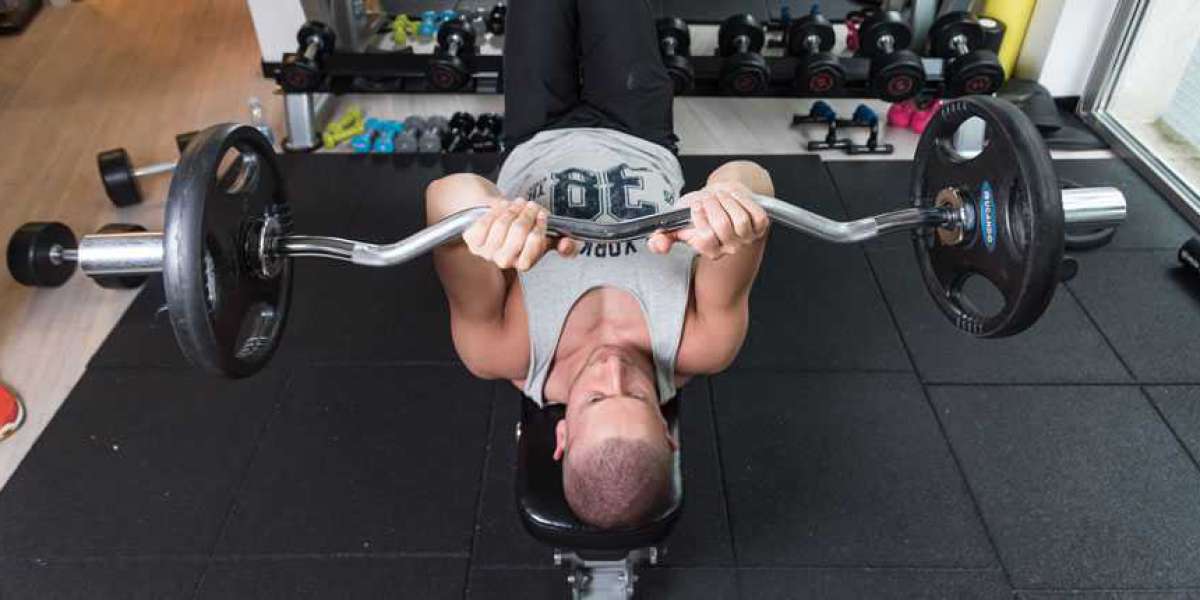The French press is a fundamental exercise for the development of the triceps . It lends itself to many variations as it can be inserted into a programming in a rather fluid way. In this article we will analyze what is the classic execution as well as other possible solutions that can lend themselves well to other contexts. Finally, we will see how to insert it into a possible training schedule for the arms between the triceps exercises.
French press execution
The classic French press involves the use of the barbell.
- The starting position sees the person lying on his back on a bench with abducted and depressed shoulder blades and arms perpendicular to the ground (as in doing a flat bench). The grip is tight, at shoulder height.
- The eccentric phase sees a flexion of the elbow which will bend. At this moment the triceps will oppose the movement and slow down the fall. The eccentric phase will end once the barbell has reached the nape of the neck.
- The concentric phase involves a gradual extension of the elbow up to the starting position. The movement should be slow, the shoulders and shoulder blades must remain firm.
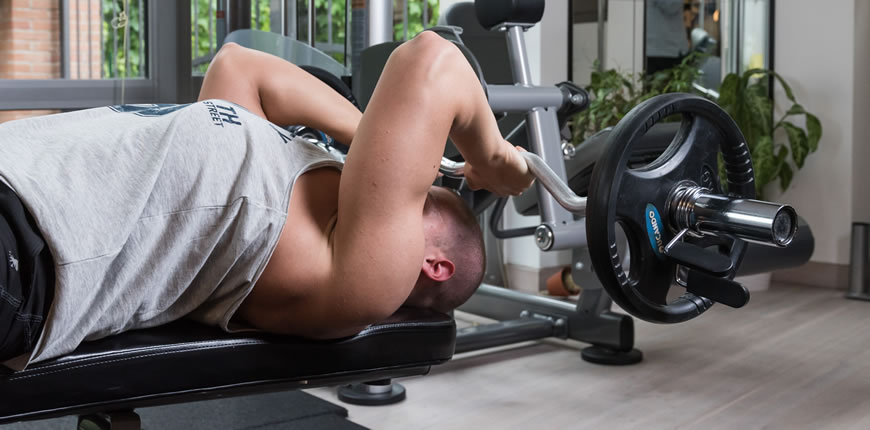
French press dumbbells
The French press can be done with dumbbells. In this case the starting position should see the palms in semi-pronation. The end of the eccentric phase instead sees the elbows flexed, a neutral position of the palms (which will look at each other) and the dumbbells next to the ears. We therefore understand that the execution with the dumbbells allows you to flex the elbow more than the barbell which will instead be blocked by the skull (which is why this execution is called "skull crusher").
French press barbell
Another possible execution is the one with the shaped balance wheel or EZ. This alternative is more comfortable than the classic barbell execution as the wrists will have a more physiological position at the joint level (semi-pronation) allowing greater safety in this sense.
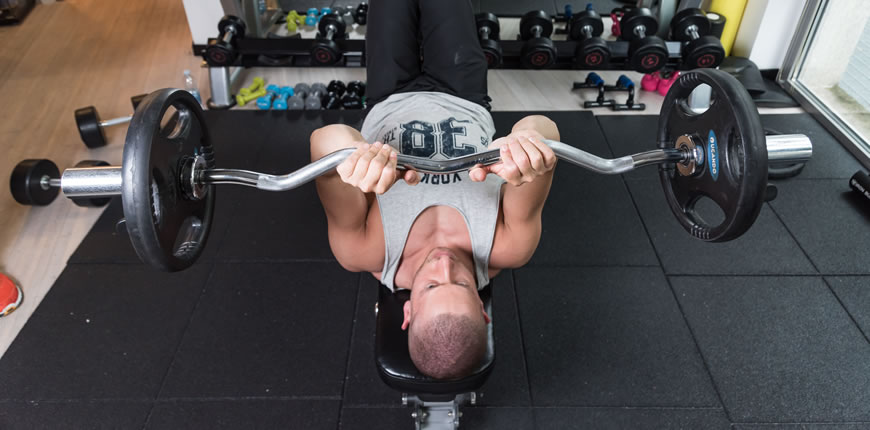
Variants of the french press
Let's go now to see what are the variants of the French press. We can use two classification methods: the variants that modify the ROM and those that are distinguished according to the role that the exercise must have on the card. Let's move on to analyze them.
Variants on the basis of the ROM
| Pre-shortening | Pre-stretch |
| Kickback | Seated French Press, |
| Pushdown to the high cable | Extensions behind the neck |
Like the biceps , the triceps is a multi-joint muscle. To reach a maximum lengthening or a maximum shortening, the position of the shoulder will be decisive. We can then analyze different variants that will allow us to work in pre-shortening or pre-stretching.
Pre-stretch
We can identify two variants. One is the French lying press with flexed humerus. It is a question of making the classic French press wall, but with the arms backwards. In this way the triceps will start from a pre-stretch position. In addition, the ROM will increase as the balance will end up behind the head being able to "continue" its path. The most interesting advantage, however, is determined by the fact that, at the end of the concentric phase and in the starting position, we will not find ourselves with our arms perpendicular to the ground. This will allow you to maintain tension also in this section of the ROM, seeing the triceps always present.
To make the pre-stretching extreme, we can perform the French press while seated. In this case we will bring the barbell behind the head effectively reaching the maximum possible stretch of the triceps. This variant is interesting as it predominantly involves the long head, not very participatory in pre-shortening movements.
Pre-shortening
The variant in pre-shortening is the JM press. This exercise is a mixture of a narrow grip bench press and a French press. The starting position is that of the French press but the eccentric phase sees not only a flexion of the elbow, but also an extension of the humerus on the shoulder. Basically the final point will see the barbell at the height of the neck rather than the skull. This variant is very interesting for work with high loads or as a mechanical stripping for more complex executions . The main advantage is in fact that, with the same load, it will be a much easier exercise for a more favorable leverage.
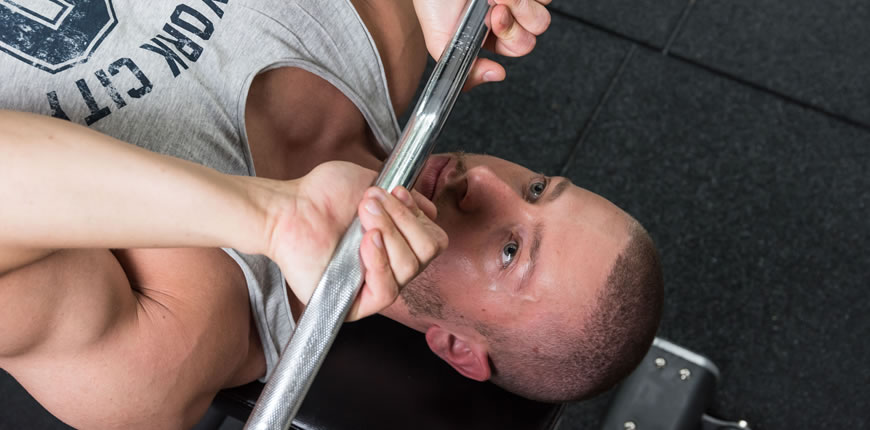
Variations based on the role of the exercise
| Pre-activation | Exercise Mother | All-out exercises |
| Pushdown to the high cable | JM Press | Extensions behind the neck to the cable |
| French Press while lying down | L-Extensions |
Pre-activation / pre-fatigue
Pre-activation or fatigue work the focus will be on the highest possible degree of activation and isolation. Interesting is the variant with the high cable that sees the athlete with the torso bent forward, towards the pulley, arms bent on the shoulder and pushed downwards. The tension will be maintained throughout the ROM and the degree of activation will tend to be greater thanks to the greater stability offered by the cable-pulley structure.
Exercise mother
The variation of the JM Press is perfect as a parent exercise. As we have seen, in fact, the load will tend to be greater and a progression or maintenance of strength will tend to be easier for the athlete to do.
Synergistic-functional exercises
As usual, there are no precise indications for synergistic-functional exercises as everything will depend on the purpose of the programming. What we can suggest on average is to vary both within the same session and between different mesocycles. In fact, changing the motor patterns allows not only to maintain a different stimulus from the point of view of the involvement of the different leaders but also to keep the muscle damage high, a mechanism that tends to desensitize itself with work re-iterated over time.
All-out exercises
All-out exercises require you to achieve the maximum degree of muscle failure possible. With this in mind, we recommend the use of cables or even handlebars. In fact, let's consider that, unlike the pre-fatigue exercises, the all-outs are found at the end of the session, when we are already fatigued. The use of the handlebars is extremely functional as we will find ourselves with a fairly large ROM, negligible loads and, consequently, a maximum degree of activation and isolation.
In general, our advice is to start the session with pre-shortening exercises and slowly finish with pre-stretching exercises. This will allow you to work with different stimuli but to safeguard the joints that could be affected by initial work with the humerus flexed on the shoulder.
French press dumbbells or French press barbell?
The use of dumbbells and the barbell have different advantages and characteristics that tend to be different.
- The dumbbells allow you to have a freer and more physiological movement being able to operate a pronation-supination of the humerus. Moreover, the fact of not having a bar allows you to increase the ROM in all those variants that would see the balance wheel lock on the nape (eg Skullcrusher).
- The barbell on the other hand allows for greater stability of movement. There are fewer forces that come into play (or rather many are offset against each other), which makes these variants tend to be "easier" from an execution point of view.
Our advice is therefore to use the dumbbells in all those cases where the exercise is at the beginning of our session. We will be fresher and we will be able to maintain an impeccable execution that allows us to take advantage of all the advantages of the same. At the end of the session, however, when we are more tired, it will be better to use the barbell which will be easier to manage and will allow us to exhaust the muscle district more effectively.
Conclusions on the french press
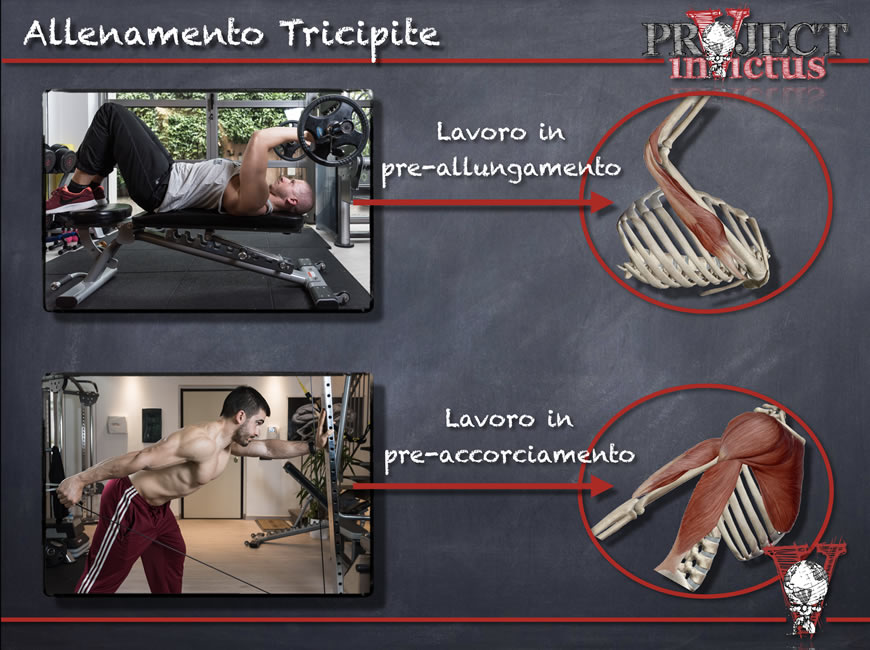
As we have seen, the French press is a basic exercise for the triceps that lends itself to multiple uses. It generally appears to be the most versatile we can find in our armory. Knowing it and learning it can be a real benefit for our results. Our invitation is then to try the different variants, insert them in our programming and understand what can work and what, for you, it is better to leave aside.
